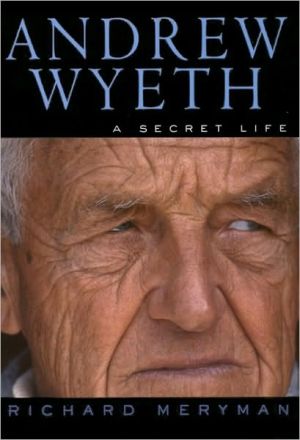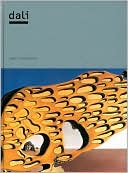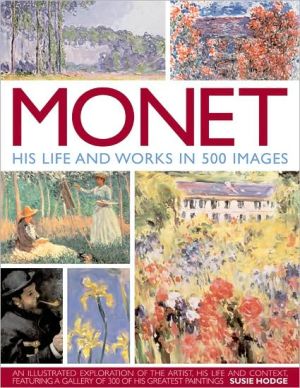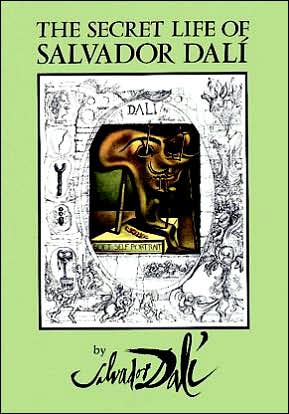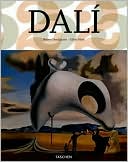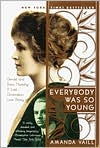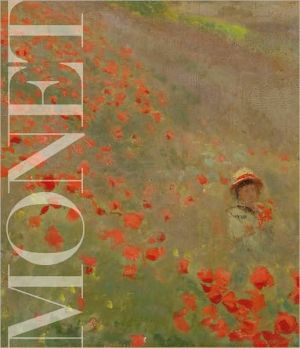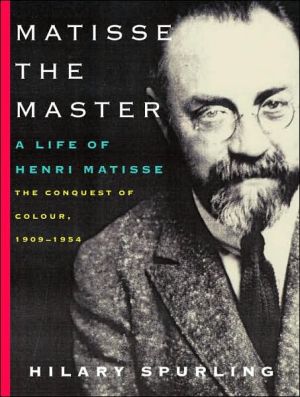Andrew Wyeth: A Secret Life
"A revelation. No one will ever view Andrew Wyeth's apparently tranquil works the same way again after reading this vivid and astonishing portrait of the turbulent, driven man who paints them. Richard Meryman has written a wonderful book."\ - Geoffrey C. Ward\ At its most fundamental level, this stunning and unique biography describes a distinguished painter's enterprise of transmitting emotion onto a flat surface. It explores all the factors that have combined to create Andrew Wyeth — his...
Search in google:
"A revelation. No one will ever view Andrew Wyeth's apparently tranquil works the same way again after reading this vivid and astonishing portrait of the turbulent, driven man who paints them. Richard Meryman has written a wonderful book." - Geoffrey C. Ward At its most fundamental level, this stunning and unique biography describes a distinguished painter's enterprise of transmitting emotion onto a flat surface. It explores all the factors that have combined to create Andrew Wyeth — his childhood in a hothouse of creativity; his hypersensitivity; his formidable wife; his identification with people marginalized and misunderstood — all which have made him an American icon. In the process, his realist works in watercolor and tempera, including the famous "Christina's World," have gained him a special and secure niche in the history of American art. The book is a portrait of obsession — how single-mindedness has affected Wyeth's relationships and transformed his world into a realm of secrecy and fervid imagination. Those who read this book will never look at Wyeth's work as they did before. It reveals the artist's dark depths, as well as the ruthless, angry, child/man fantasist who paints the basic brutalities of existence — death and madness —that vibrate eerily beneath his pictures' calm surfaces. Richard Meryman's narrative is almost novelistic, with its larger-than-life characters and subplots: the tragedy of C.C. Wyeth; Betsy Wyeth's campaign for independence and individuality; the byzantine 15-year-long drama of the Helga paintings; the eccentric and creative Wyeth clan; and the idiosyncratic land and people of Maine and Pennsylvania. Based on 30 years of research, frequent visits and countless conversations with the artist, his family, friends, admirers and critics, Andrew Wyeth: A Secret Life is the only book about the man and the artist that gets behind his carefully guarded screen, tells the full story of his life and reveals his complex personality and the motivations for his paintings.
Andrew Wyeth \ \ By Richard Meryman Perennial \ Copyright © 1998 Richard Meryman\ All right reserved.\ ISBN: 9780060929213\ \ \ Chapter 1\ Christina's World was painted in a rage. I was furious that Betsy wanted to build a goddamn house in Cushing. I didn't want to be rooted down. I was afraid I was getting in deep like my father at Port Clyde with the big house and dock. I'd go down there to Olson's every day and put all my heat into that picture. I felt the tragedy of Christina, and I decided, "They're building that fucking house; I'm going to make this picture as powerful as I can."I have this hate within me--and you got to take it out on the medium you're working in. That makes you struggle to push a picture even further, beyond the call of duty.\ The Maine sky in Christina's World is a pale blue ribbon. A billow of brown field rises toward it, at once brief and vast, reaching at the left to the farthest edge of the earth. At center right, exactly on the horizon, isolated in a tiny brown universe of mowed grass, are a barn and a gaunt, looming house, its dormer-windowed roof steeply pitched. Lit by a slanting sun, weathered silver-gray, they are exquisitely miniature. The brooding stillness is ruffled by a motion of gulls around the barn, by a minute, haunting black shirt on a clothesline, flying with outstretched arms. The buildings seem to breathe--alive, waiting, ominous.\ In the foreground on thecoarse grass a slender woman in a pink dress lies twisting back toward the house. Her upper body raised on emaciated arms, her elbow a swollen knob, her hands clenched and gnarled--she seems galvanized by yearning. Struggle and hope mix with malevolence. It is a disturbing picture, romantic at first glance, ultimately eerie.\ It was the breakthrough painting that launched Andrew Wyeth toward a stratosphere of fame: an American household name who was also certified by elite museums and wealthy collectors. In 1959 and 1962 three museums paid record prices for his temperas. Christina's World (pages 16-17) became one of America's four most indelible images--along with Grant Wood's American Gothic, Gilbert Stuart's portrait of George Washington, and Study in Grey and Black (Whistler's Mother) by James McNeill Whistler.\ Indeed, Christina's World has suffered a fate of other icons--it has become the butt of the backhanded flattery of jokes. In cartoons Nixon crawls toward the White House, Patty Hearst cradles a gun in Christina's field, the Statue of Liberty yearns for a distant Manhattan skyline. A pink-clad fat lady longs for a layer cake. In a 1969 New York Times Magazine, an underwear model lay twisted at the bottom of a hill. Wyeth, laughing, drew a tiny house and barn on the hilltop. In 1994 John Baldessari used a square of Christina's field in his collage assembled from paintings in the permanent collection of New York's Museum of Modern Art.\ Christina herself became famous. Tourists stalked the house, peering through the window at her, taking pictures, imitating the pose down in the field. One morning she awoke and found a stranger standing over her. "I'm a minister," he explained. When Wyeth told her the myriad symbolisms that are read into Christina's World, she said, "People are silly."\ Wyeth spent the entire summer of 1948 painting this 32H-by-48-inch picture. The idea was triggered in May when he happened to look out a third-floor window of the Olson house and saw Christina, dragging herself across the grass. A gradual, never diagnosed muscular deterioration had left her lower body helpless. That day she was laboriously returning from the tiny garden where she cultivated the flowers that decked the lower rooms. Even the shed leading to the privy was lit by a bouquet.\ Late that afternoon, Wyeth rowed his dory home from Hathorn Point, a half mile up the estuary called the St. George River that ends in Thomaston, Maine. The apparition of Christina, "crawling like a crab on a New England shore," stirred in his imagination. "Sometimes I think I'm not very artistic," explains Wyeth, "because people will say, 'Did you notice the amazing sulfur yellow in the sky, the way it . . .' That stuff never strikes me to paint. It's got to click with something I'm already thinking about. Then my hair rises on the back of my neck. I get goose pimples."\ He landed at Bradford Point in Cushing where his wife, Betsy, was restoring an ancient colonial cottage moved onto acreage purchased from her parents' farm. To Andrew the house represented an anchor mooring him to this piece of earth. Now his summer months could not be simple, irresponsible, organized solely by his painting impulses. He had been happy living in two converted horse stalls in the barn near her parents' farmhouse--able to pick up and row across to Port Clyde and move in with his own family, with his father, the famed illustrator N. C. Wyeth--able to work there in the little studio he had built. Now Andrew felt himself turning into a man of property, of burdens.\ That evening he and Betsy joined a dinner party given by Betsy's parents, Bess and Merle James. During the meal Andrew suddenly put down his fork, left the house, and crossed to the bedroom in the barn. On the first piece of paper that came to hand, he indicated in a few swirling pencil strokes the composition of Christina's World (page 6)--placing her down in the field near the Olson burial plot. He once explained, "If you leave something nebulous in your mind . . . I hunt for it with purely an abstract line. I have to get the essence down as quickly as possible before it goes."\ He showed nobody the drawing. Early each morning he returned to Hathorn Point. Dressed in dungarees, sweatshirt, and high-top sneakers, he walked briskly up a dirt road through blueberry fields, an arthritic hip defect splaying out his feet and making his thin body rock sideways, knees and elbows flailing, herky-jerky--like an off-kilter windmill.\ Above him loomed the three-story Olson house, a vast, stark, gray ghost of Maine's tidy white frame houses, abandoned decades ago to soaking coastal storms and parching sun. Only traces of white remained on the warped clapboards and shingles. From the right end, like an afterthought, projected the one-story kitchen ell. Through the near window, past red darts of geranium blossoms, the head of Christina Olson was silhouetted against the opposite window--the long, ruined face with its hugely arching nose, and the oily strings of her lank hair.\ Entering the kitchen, Wyeth was cordial but courtly--respectful of the dignity that clothed Christina's witchlike looks. Her right eye looked at Wyeth. Her left eye, a small brown pupil in a murky white ball, stared off toward some invisible spot. A single tooth stood like a post in her mouth. Her arms were skeletal, her hands contorted back at the wrists. She lived marooned on her straight-backed, cockeyed kitchen chair, its rear legs worn short from hitching across the rutted linoleum floor between the table and the stove. On the seat of the chair were layers of newspaper to absorb the urine.\ Within reach on the kitchen table lay her supply of plates and bowls, the jars of sugar and butter, all covered by a cloth. A big, black iron Glenwood stove, banded with chrome, stood against a center wall. Christina reached out with a poker to work its door. Beyond it, in a rocker, a pipe in his mouth, a cap on his head, sat her brother Alvaro, thin, small, weedy. With the same narrow face overwhelmed by the Olson nose, he looked to Wyeth "like all the crows of Maine." Behind him was the woodbox, which held the two cords they went through each winter, brought in by a wheelbarrow via the front door. Keeping Olson's warm was "like trying to heat a lobster trap," said Ralph Cline, another of Wyeth's Maine subjects.\ From her station by the table Christina could watch the comings and goings on her horizons. Through the far window she kept track of the ships heading out to sea from Thomaston. She worried about storms and awaited the vessels' return. She could remember the last four-master heading out to sea. Through the opposite inland window she monitored the local traffic on the road that led to Cushing. The kitchen windows and doors were unprotected by screens. Cats and dogs came and went at will. For a time a porcupine took a shine to the pantry.\ The kitchen ceiling and walls, impregnated with years of dirt, were a scabrous black. The grime was a lighter shade along the lower three feet of one wall, the height Christina could reach during a long-ago attempt at housecleaning. The overheated air was fetid with wood smoke, fuel oil, urine, musty cloth, cats, and tobacco. Some years later Wyeth brought the actor Robert Montgomery around to meet Christina. After a few minutes he fled outside and vomited.\ \ \ \ Continues... \ \ \ \ Excerpted from Andrew Wyeth by Richard Meryman Copyright © 1998 by Richard Meryman. Excerpted by permission.\ All rights reserved. No part of this excerpt may be reproduced or reprinted without permission in writing from the publisher.\ Excerpts are provided by Dial-A-Book Inc. solely for the personal use of visitors to this web site. \ \
\ From Barnes & NobleRichard Meryman's special entrée into the world of Andrew Wyeth (he's been a friend of the Wyeth clan since the 1960s) has allowed him to write a personal and moving account of a notoriously private artist's life and career. Through the analysis of one or two paintings per chapter, the author arrives at conclusions about the aesthetic choices Wyeth made and the emotional impetus for the creation of such famous works as "Christina's World" and the legendary Helga paintings. With photos from the author's private collection, as well as reproductions of Wyeth's art in color and black and white.\ \
